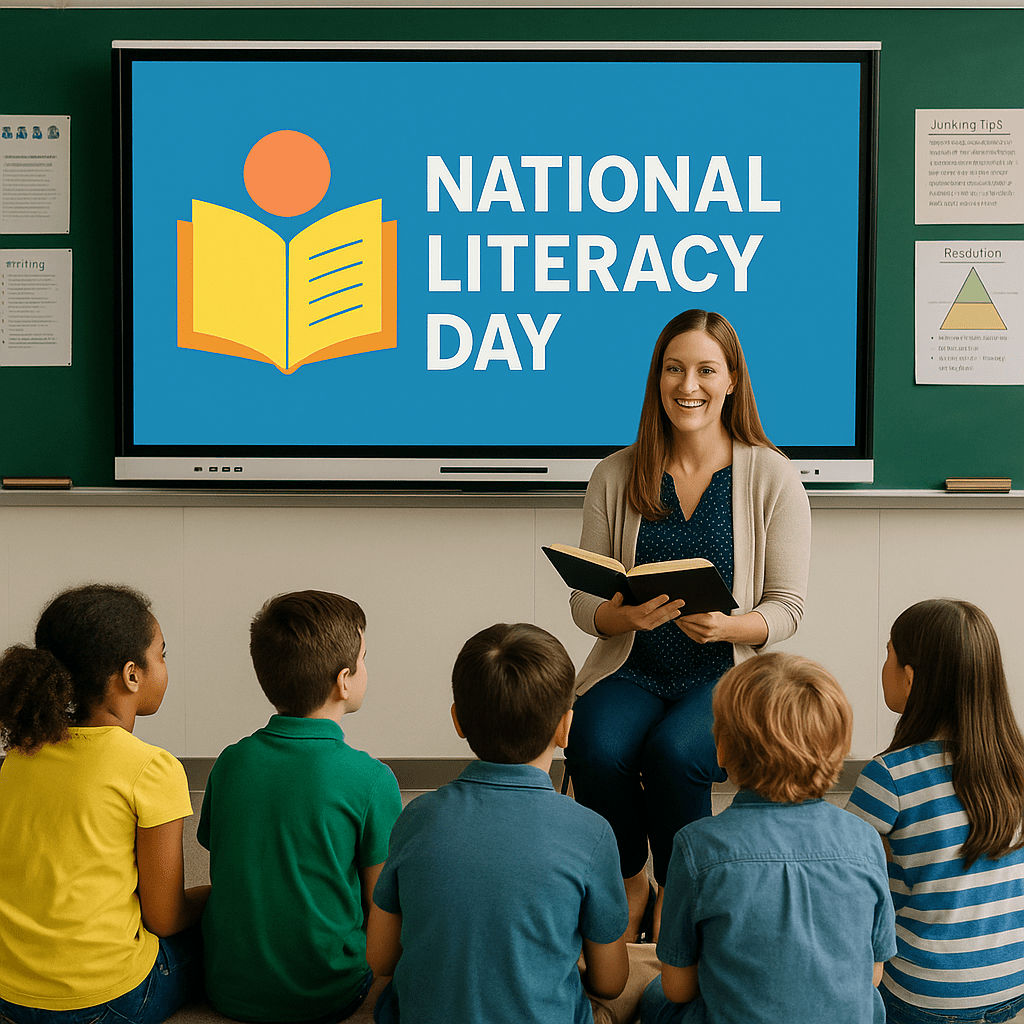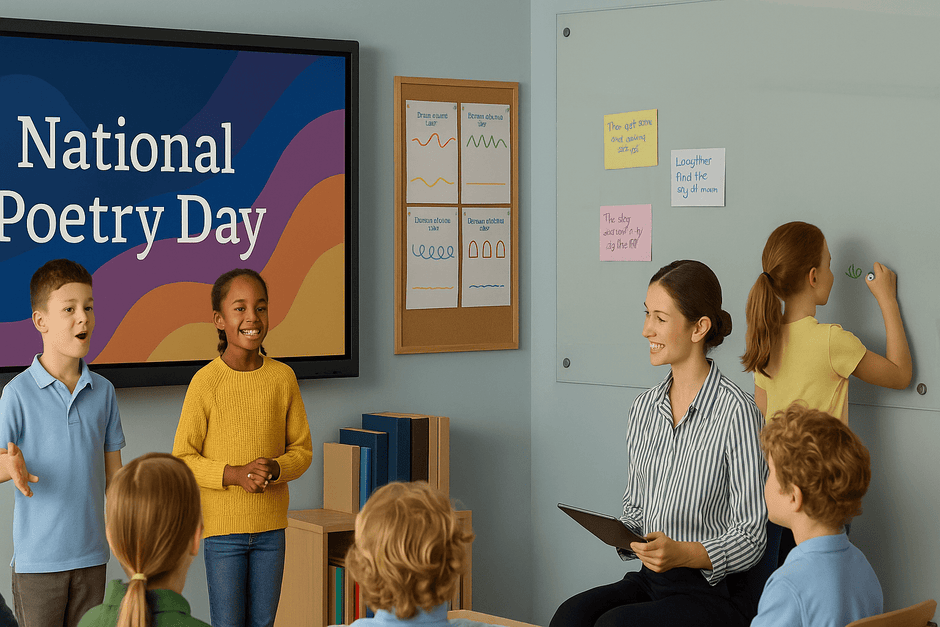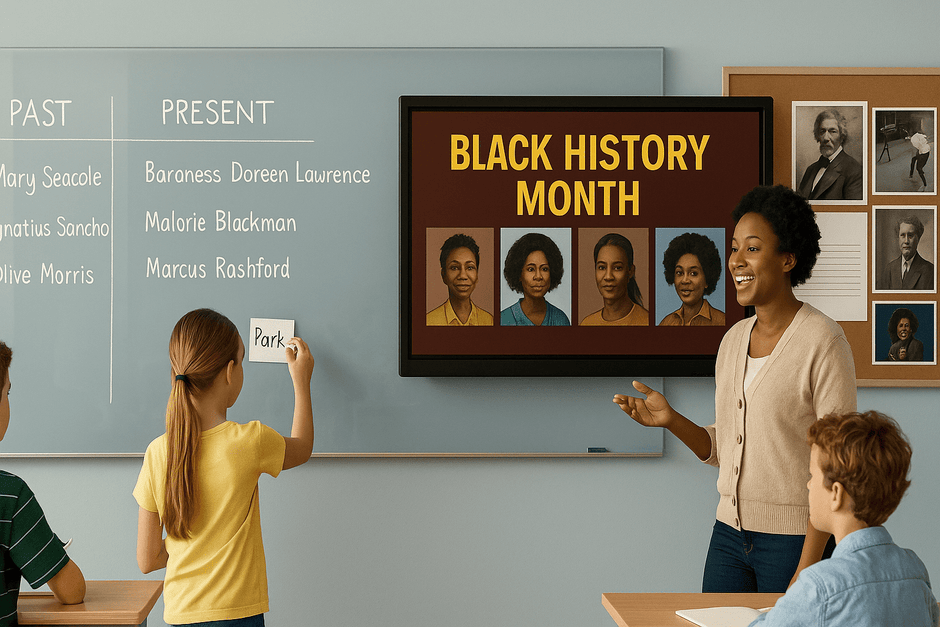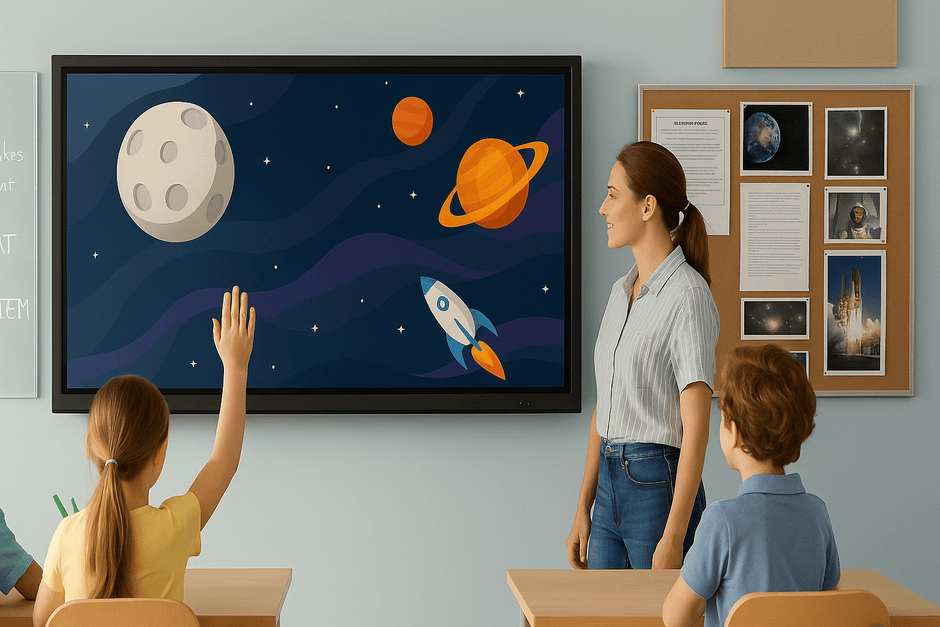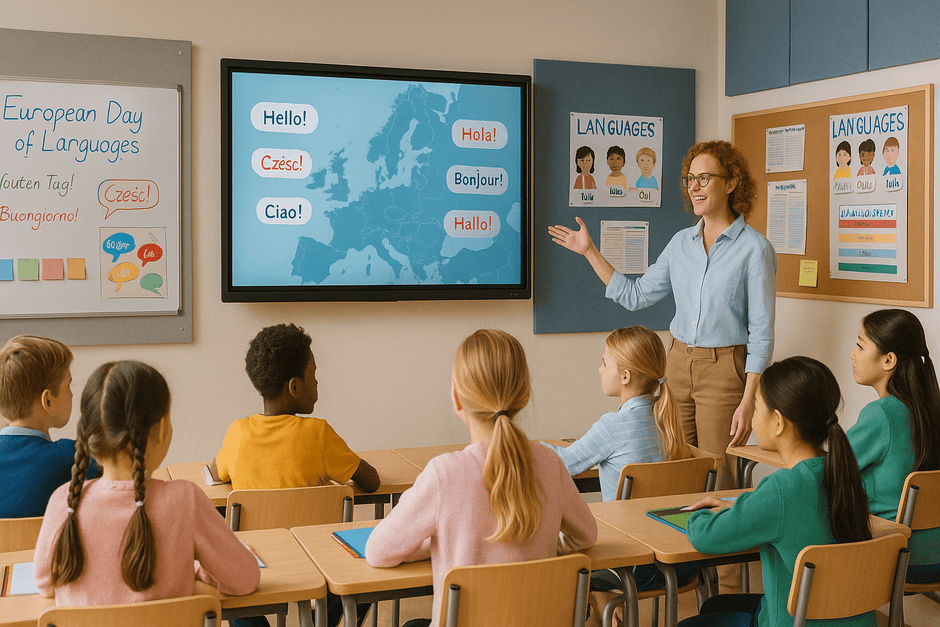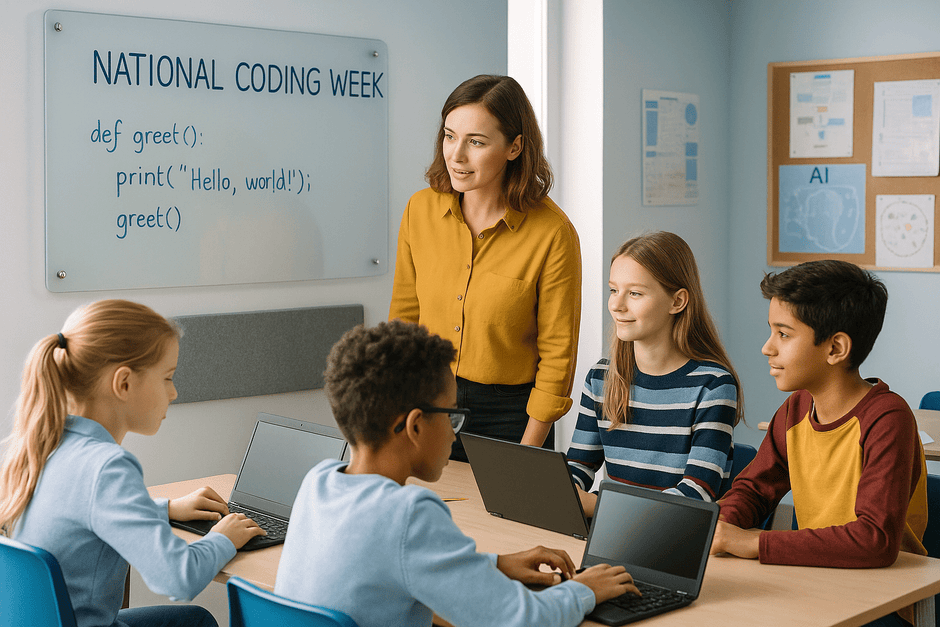Date: 8 September 2025 • Read time: ~12 minutes
International Literacy Day is a brilliant annual moment for schools to spotlight reading, writing and oracy. This year’s theme focused on literacy in a digital age — timely for classrooms balancing books with screens. Here’s a retrospective of what schools ran, what pupils and staff loved, what landed less well, and how to turn a one-day celebration into year-round impact.
Why Literacy Day matters
International Literacy Day is designed to celebrate literacy as a human right and a foundation for lifelong learning. For schools, it is a catalyst: a chance to energise pupils, bring families into the conversation, and trial approaches that can be woven into the school’s literacy strategy.
In 2025, the theme highlighted the digital turn in literacy — from e-books and audiobooks to media literacy and pupil-made podcasts. Schools told us they were keen to keep reading for pleasure at the heart while tapping into the motivational pull of digital tools.
What schools actually did in 2025
While formal case studies are still thin on the ground, three broad patterns emerged from staff briefings, newsletters and resource packs: whole-school moments that set the tone, hands-on activities that gave pupils ownership, and community-facing events that extended impact beyond the classroom.
1) Whole-school assemblies and author encounters
- Kick-off assemblies linked the theme to school values, often featuring teacher read-alouds or short pupil performances.
- Live or virtual author/poet Q&As created a sense of occasion and gave pupils direct access to creators.
- Some schools used ready-made assemblies to lighten preparation load and ensure consistent messaging.
2) Book swaps, pop-up libraries and reading challenges
- Low-cost, high-joy book swaps helped pupils discover new genres.
- 24-hour or week-long reading challenges used simple logs and tutor-time shout-outs to build momentum.
- Pop-up libraries in dining halls or corridors met pupils where they are.
3) Creative writing, storytelling and oracy workshops
- Open-ended prompts (mystery objects, images, first-line starters) unlocked imagination across ages.
- Oracy activities — storytelling circles, book debates, and “speed-sharing favourites” — boosted confidence.
- Publishing pupil work as mini-zines or corridor displays created pride and purpose.
4) Digital and media literacy
- Short, practical lessons on evaluating online sources and spotting bias tied directly to the theme.
- Digital storytelling — podcasts, short videos, comic-strips — engaged pupils who relish making media.
- E-book and audiobook tasters widened access and modelled different ways to read.
5) Cross-age buddy reading
- Older pupils reading to younger peers created calm, joyful moments and strengthened community ties.
- Simple coaching for older buddies (pace, expression, questions) made sessions more successful.
6) Family and community events
- Breakfast reading clubs and after-school family sessions welcomed parents and carers.
- Partnerships with local libraries and indie bookshops brought expertise, donations and author links.
What was best received by pupils and staff
- Choice and ownership. Letting pupils pick texts and formats increased motivation and completion.
- Live interaction. Q&As, debates and workshops outperformed passive assemblies.
- Visible celebration. Publishing pupil work and showcasing reading journeys built lasting pride.
- Community involvement. Libraries, parents and local writers extended reach and relevance.
- Follow-through. Schools that launched ongoing clubs or challenges saw better stickiness.
What didn’t land as well
- Tokenistic, one-off activities that weren’t tied to the school’s literacy strategy.
- One-size-fits-all tasks that didn’t differentiate by age, interest or ability.
- Tech-heavy plans that unintentionally excluded pupils with limited access or added staff workload.
- Under-prepared buddy sessions where older readers lacked simple guidance.
Seven best-practice principles for future events
- Plan early and embed. Treat Literacy Day as a launchpad within your whole-school literacy plan, not a standalone event.
- Co-design with pupils. Use quick surveys or tutor-time votes to shape texts and activities.
- Mix the mediums. Balance reading, writing, oracy and digital creation so every learner can shine.
- Make it visible. Turn corridors into galleries of pupil writing and reading recommendations.
- Partner up. Libraries, bookshops and local authors add expertise and excitement.
- Differentiate and scaffold. Provide audiobooks, sentence stems, peer support and visuals so no one is left behind.
- Evaluate and iterate. Gather pupil, staff and family feedback within a week while memories are fresh.
Ready-to-use templates and ideas you can lift
Quick-start assembly outline (15 minutes)
- Hook (2 mins): A teacher reads a gripping opening paragraph.
- Theme (3 mins): Two slides on literacy in a digital age and why reading still matters.
- Pupil voices (5 mins): Three short recommendations from different year groups.
- Call to action (3 mins): Book swap, reading challenge and lunchtime pop-up library.
- Exit ticket: Each pupil writes one book they’ll try next on a sticky note.
60-minute creative writing workshop
- Starter (10): Show 3 images. Pupils choose one and write a first line.
- Mini-lesson (10): “Show, don’t tell” with two model sentences.
- Draft (25): Write with optional scaffolds: sentence stems, vocabulary banks, audio dictation.
- Share (10): Two-stars-and-a-wish peer feedback.
- Celebrate (5): Sticker, stamp and display sign-up list.
Buddy reading pack (KS4 → KS1/2)
- One-page guide for older pupils: pace, expression, questions to ask, how to respond to tricky words.
- Curated set of 15 picture books with diverse characters and topics.
- 5-minute debrief card for buddies to note what their partner enjoyed for next time.
Digital storytelling (podcast mini-project)
- Prompt: “The book that changed my mind…” or “If I could step into any story…”
- Structure: 90-second monologue + 30-second recommendation for a peer.
- Accessibility: allow audio recording as an alternative to writing; provide a simple storyboard canvas.
Inclusion and wellbeing: making literacy for everyone
Literacy celebrations should lift every learner. That means designing for sensory comfort, speech intelligibility and a range of expression. Practical steps:
- Reduce noise spillover during buddy reading and author talks so all pupils can focus. Consider acoustic zoning in larger spaces to improve clarity and reduce listening fatigue.
- Offer multiple ways to engage — reading, listening, speaking, drawing and dictation — so pupils with differing needs can access and enjoy literacy.
- Use clear, legible displays near eye level with high-contrast writing surfaces so work is easy to read and celebrate.
Note: When improving learning spaces, many schools reference BB93 acoustic guidance for schools when thinking about reverberation and noise control. Calmer acoustics support better attention, behaviour and participation in literacy activities.

Spaces that support literacy all year
From our work with schools, the environment often makes the difference between a lovely one-day event and a sustained culture of reading and writing. Three upgrades schools tell us have the biggest impact:
1) Writable walls for visible literacy
Glass writing boards and learning walls turn corridors and classrooms into publishing spaces — ideal for showcasing book reviews, vocabulary walls and story planning. Smooth, low-ghosting surfaces invite frequent use and make it easy to refresh displays weekly.
2) Mobile boards for pop-up literacy zones
Lightweight mobile whiteboards help you take book corners and debate stations anywhere — dining hall, library, even outside for reading picnics. Double-sided panels give staff flexibility to run parallel activities.
3) Acoustic panels for calmer reading and clearer speech
Improved acoustics reduce distraction and strain, particularly in open areas and multi-use halls. That supports oracy, guided reading and author talks, and aligns with best practice under BB93.
Post-event checklist: turn a day into a culture
- Debrief within 7 days. What did pupils love? What would staff change? Capture three actions for next time.
- Publish the wins. Showcase pupil work and photos (with permissions) on displays and newsletters.
- Launch one ongoing habit. A fortnightly book club, a term-long reading challenge, or a rolling corridor review wall.
- Calendar the next moments. Tie in with library card sign-ups, World Book Day and author visits.
- Tidy the kit. Refresh pens, clean boards, rotate displays, and log any space improvements needed.
Recommended resources for schools
Here are practical products schools use to make literacy visible, inclusive and easy to sustain. Replace the links with your site URLs:
- Glass writing boards and learning walls − low-ghosting, easy-clean surfaces for publishing pupil work and modelling writing.
- Mobile whiteboards − create pop-up reading and debate zones anywhere on site.
- Acoustic wall panels − calmer spaces for reading and clearer speech for author talks and oracy.
- Display and notice boards − durable, safe and visible ways to celebrate reading journeys.
- Combined display + AV solutions − blend interactive screens with writable wings for whole-class modelling.
Plan your next literacy event with us
We help schools design practical, inclusive spaces that make reading and writing visible every day − not just on 8 September. Ask us about glassboards, mobile boards, acoustic upgrades and turnkey learning walls for your classrooms and corridors.
Contact Presentation Spaces to discuss your space, timescales and budget.



